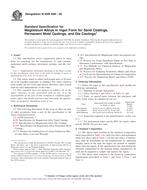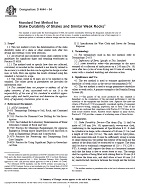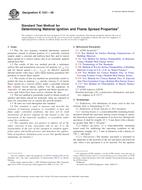1.1 This guide covers the preparation of a formal plan for measurement of outdoor sound levels. A documented, detailed plan is highly desirable and useful for major environmental noise studies requiring measurements at several locations over a long period. This guide is intended primarily for use in such cases. Many simple measurements can be made without extensive prior planning or documentation. It is recommended that persons or organizations routinely performing such measurements draft and use a brief generic plan based on, but not referencing, this guide.
Note 1-The extent of planning and plan documentation should be consistent with the budget and needs of the project. In a large measurement program it is possible that use of a formal measurement plan could result in cost savings greater than the cost of preparing the plan. A formal documented plan can be prepared for even the simplest measurement. However, on a small project, the cost of preparation of a formal plan may not be cost effective. In such cases, plan documentation could be limited to inclusion in the final report.
1.1.1 This guide addresses the following aspects of outdoor sound level measurements:
Reporting Requirements 4.8 Plan Format 5.0 Defining the Scope of the Measurement 5.1.0 Selecting the Appropriate Survey Class 5.1.1 Requirements for Unattended Measurements 5.2, Annex A2 Operator Qualifications 5.3, Annex A3 Identification of Interferences 5.4.1.2, Annex A1 Measurement Procedures 5.8 Procedures for Dealing with Impulsive Sounds, 5.8.1.3, 5.8.3 Tonal Sounds, and Infra-Sound Analysis and Post-analysis Requirements 5.9 Requirements for Measurement and Reporting of Supporting Data 5.10 Procedures for Mitigating Interferences Annex A1 Specification of the following: Precision and Accuracy Requirements 5.1.14, 5.6.4 Measurement Locations 5.4, Annex A4, Appendix XI Measurement Schedule 5.5 Measurement Durations 5.5 Amount of Data Required 5.5.5.4 Sound Measurement Equipment 5.6 Calibration Requirements 5.6.4
1.1.2 Test Method E1503 for Conducting Outdoor Sound Measurements Using a Digital Statistical Analysis System addresses listed aspects of outdoor sound level measurements for situations that are normally encountered. Many other formal and informal practices also address most of these issues. However, there is sometimes a need to depart from the normal methods in order to accommodate a special situation or a regulatory requirement. This guide provides options that are technically correct for specific situations, and provides the information needed for selecting appropriate options.
1.1.3 This guide may be used when planning a program for obtaining either a single measurement set of sound level data or multiple sets of data, as well as related supporting data.
1.2 Measurements that may be planned using this guide include, but are not limited, to the following:
1.2.1 Characterization of the acoustical environment of a site.
1.2.2 Characterization of the sound emissions of a specific sound source that exhibits a temporal variation in sound output.
1.2.3 Measurement of low-frequency sound (infra-sound) is included because it is sometimes implicated in driving structural vibration that translates to audible interior sound.
1.2.4 Measurement of impulsive sound and sound with significant tonal content.
1.3 The values stated in SI units are to be regarded as the standard. The values given in parentheses are for information only.
1.4 This standard does not purport to address all of the safety concerns, if any, associated with its use. It is the responsibility of the user of this standard to establish appropriate safety and health practices and determine the applicability of regulatory limitations prior to use.
Product Details
- Published:
- 04/10/1996
- Number of Pages:
- 17
- File Size:
- 1 file , 140 KB


